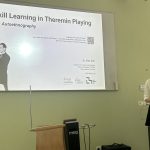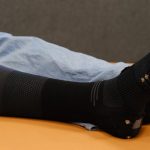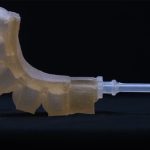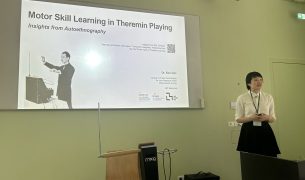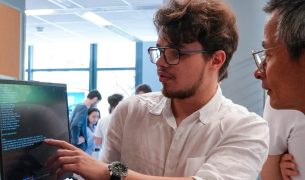The Institute for Future Technologies of De Vinci Higher Education organised an enlightening Instant Futures Talk titled “Human-Computer Integration at Physical, Sensory, and Behavioral Levels.”
Esteemed guest speaker Prof. Jürgen Steimle, a distinguished figure in computer science and Dean of the Faculty of Mathematics and Computer Science at Universität des Saarlandes (Germany) led this thought-provoking discussion.
Exploring the intricate interplay between physical, sensory, and behavioural aspects of human-computer interaction
At this event, attendees delved into the cutting-edge research spearheaded by Prof. Steimle, which focused on the convergence of human physiology and digital technologies. By exploring the intricate interplay between physical, sensory, and behavioural aspects of human-computer interaction, Prof. Steimle offered unique insights into the future landscape of technology and its impact on everyday life.
This talk represented a journey into interactive materials, biosensing interfaces, and wearable robotics. We envision a world where seamless integration between humans and computers transcends traditional boundaries.
How is computing becoming increasingly close to and integrated with the human body?
This hypothesis opens up exciting new opportunities for embodied devices that augment human physical and cognitive abilities, assist with health and fitness tasks, and provide new means of communication. This talk presented approaches to human-computer integration at the physical, sensory and behavioural levels.
First, seamless physical integration requires a new generation of soft devices and soft robotic interfaces whose form factors and material properties differ fundamentally from traditional interactive devices.
Professor Jürgen Steimle presented recent results from his research on ultra-thin and skin-conformal interfaces that ergonomically interface with the body.
Second, he presented rich sensory human-computer integration technologies using physiological sensing and feel-through haptics. Thirdly, effective behavioural integration with a body-based intelligent system requires techniques that ensure effective human-AI collaboration.
He also discussed recent work on wearable robotic interfaces and emphasised the importance of computational modelling and optimisation for designing devices tailored to human anatomical characteristics, wearability, and desired applications.
About Professor Jürgen Steimle
He is a full professor at the Department of Computer Science at Saarland University and Dean of the Faculty of Mathematics and Computer Science. Previously, he held positions as Independent Research Group Leader at Saarland University and Senior Researcher at the Max Planck Institute for Informatics.
He was a Visiting Assistant Professor at the MIT Media Lab. He holds a PhD in Computer Science from the Darmstadt University of Technology. His research investigates wearable computing, touch and haptic interfaces, digital fabrication and new materials.
His work was recognised with an ERC Starting Grant, best paper awards at ACM CHI and UIST, and the Best Computer Science Dissertation Award 2009 by the German, Austrian, and Swiss Computer Societies. He serves as co-chair and member of program committees for major international conferences; most recently, he was Program Chair at UIST 2023.










